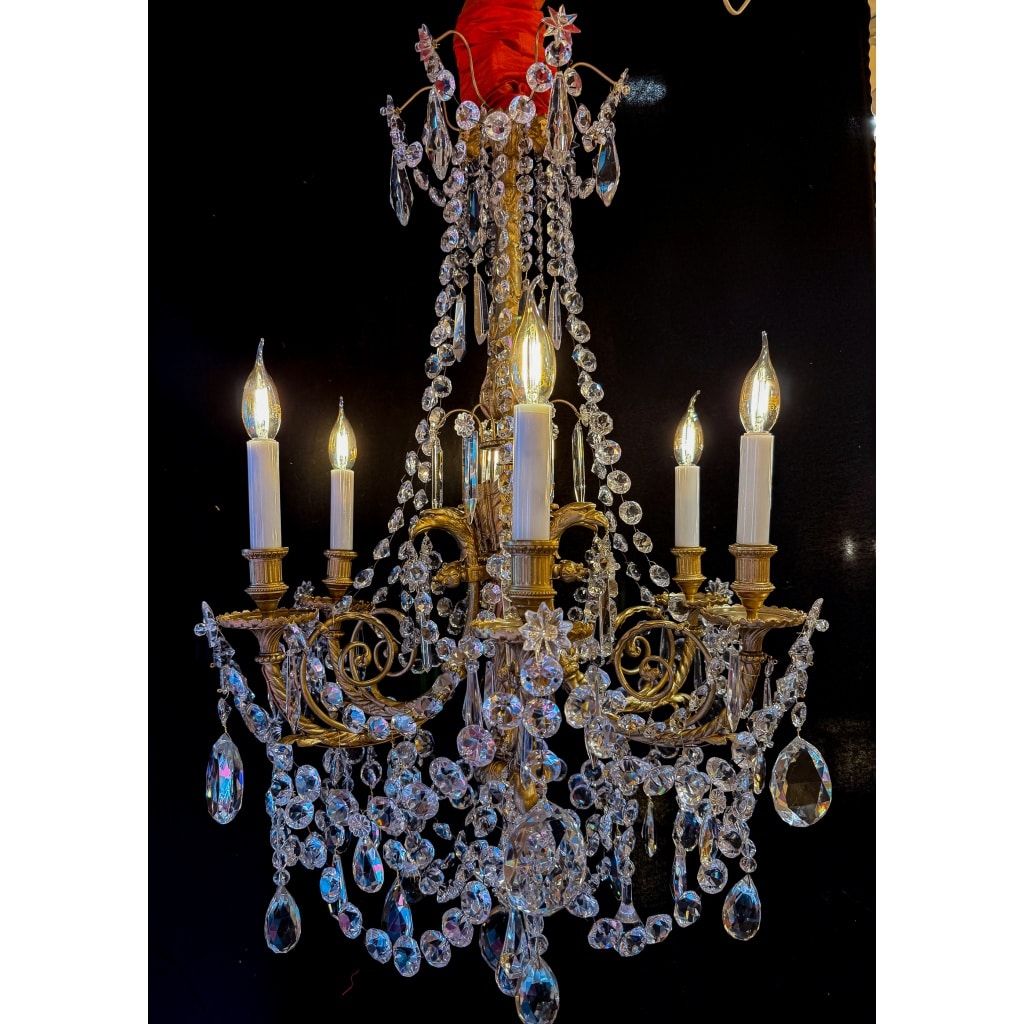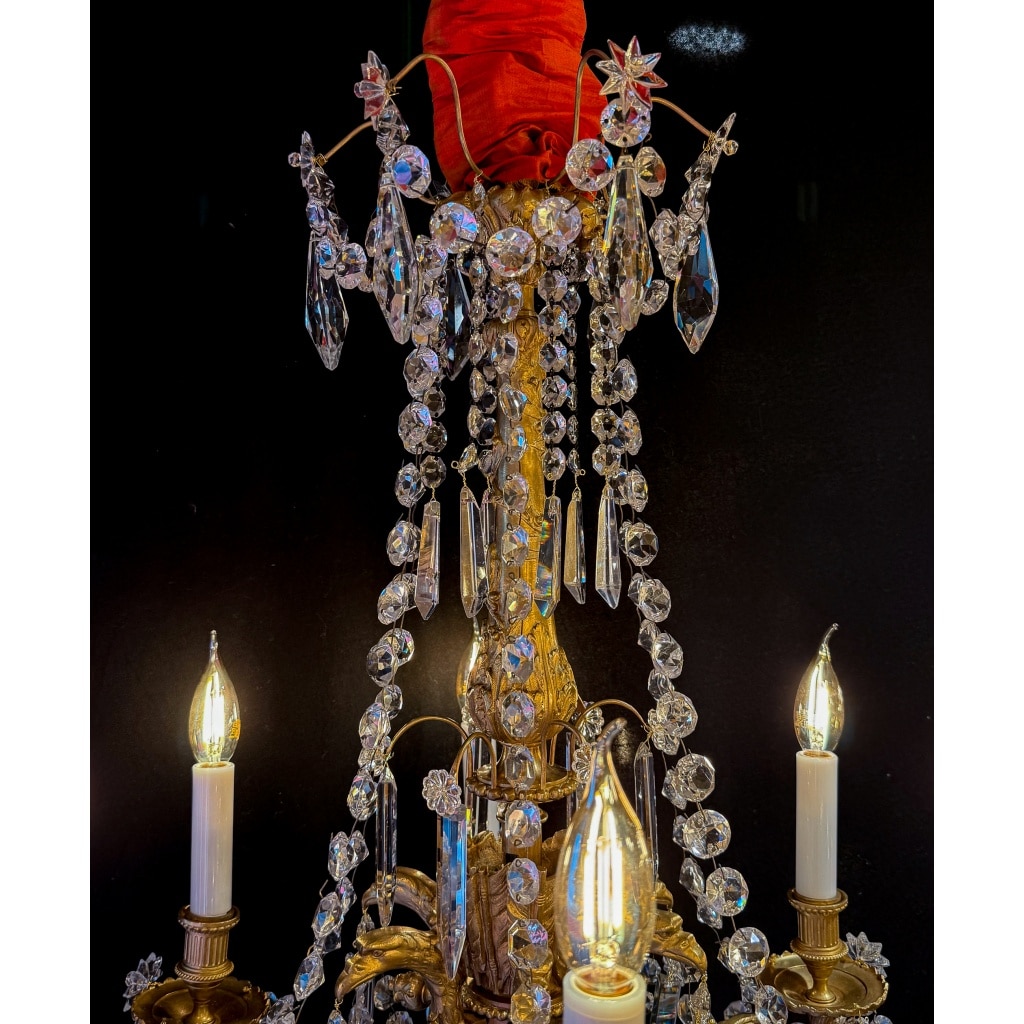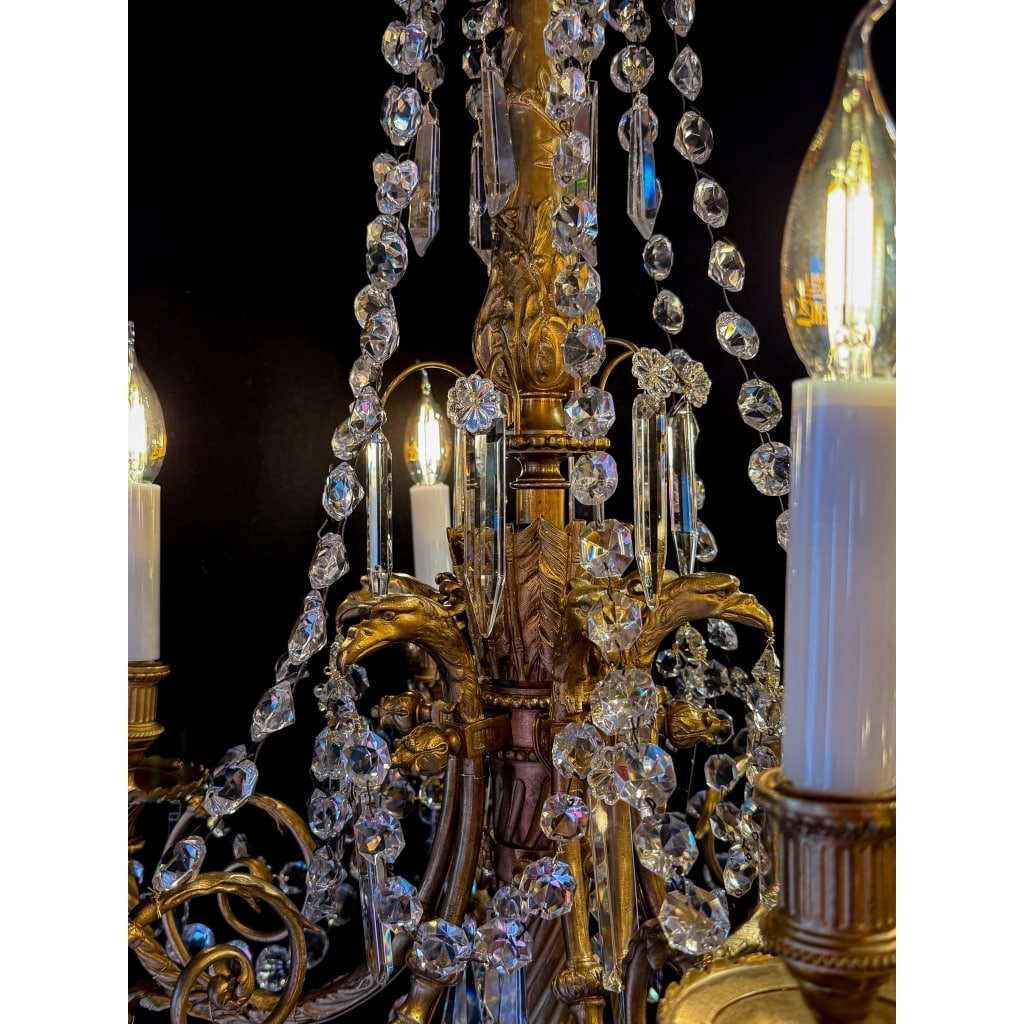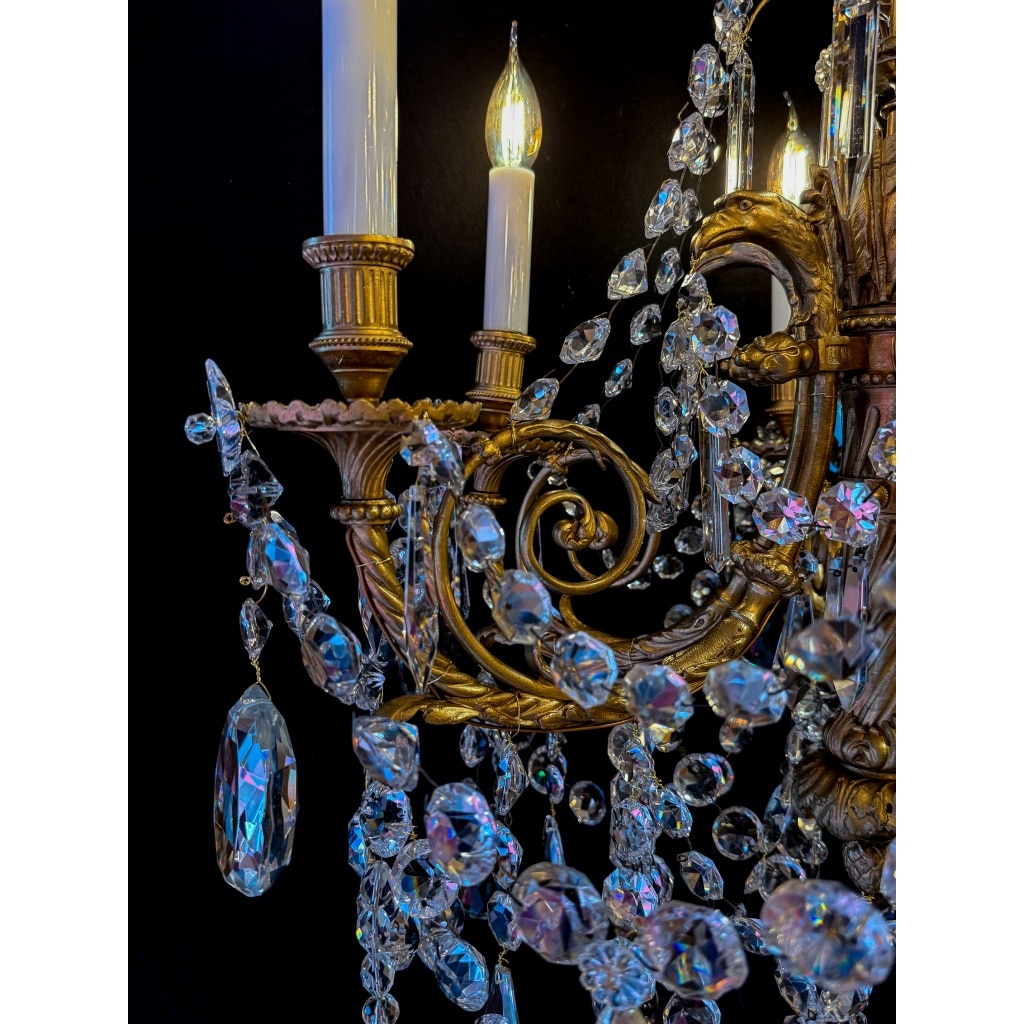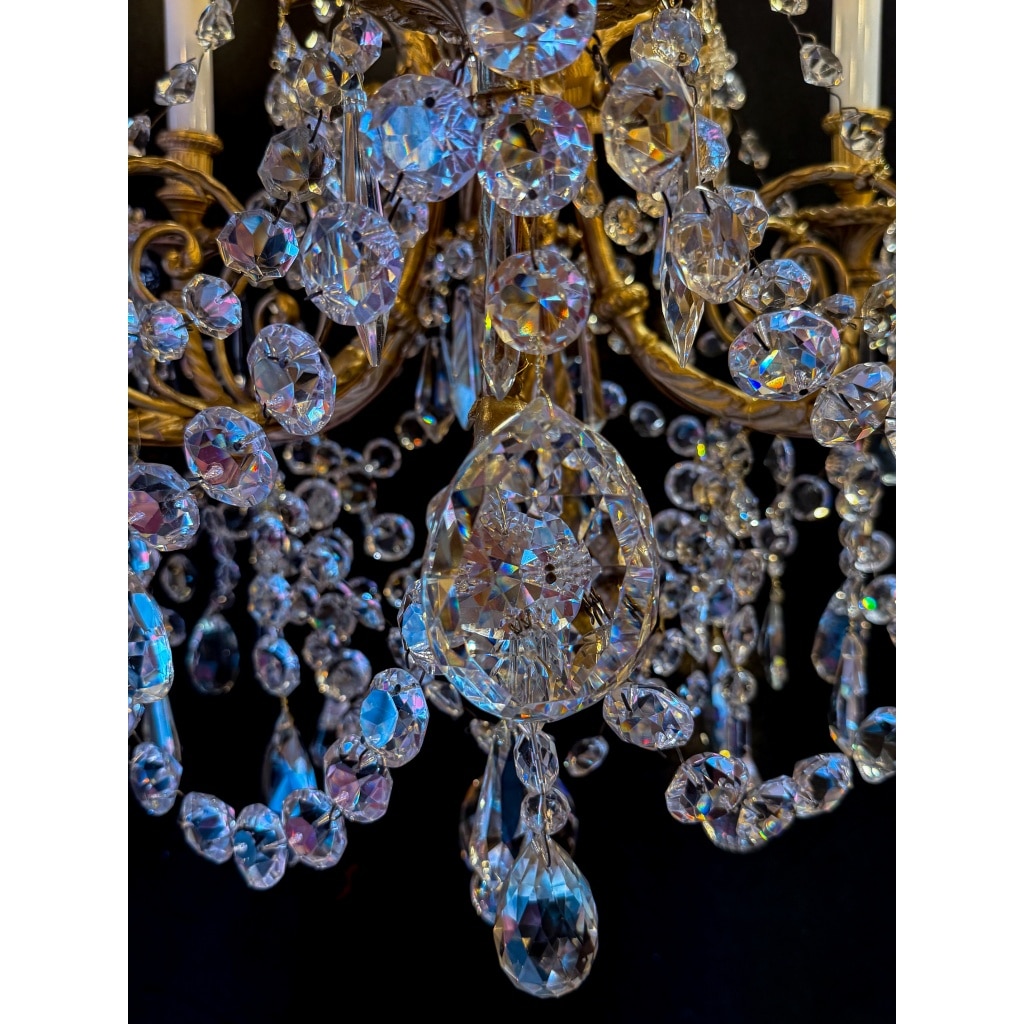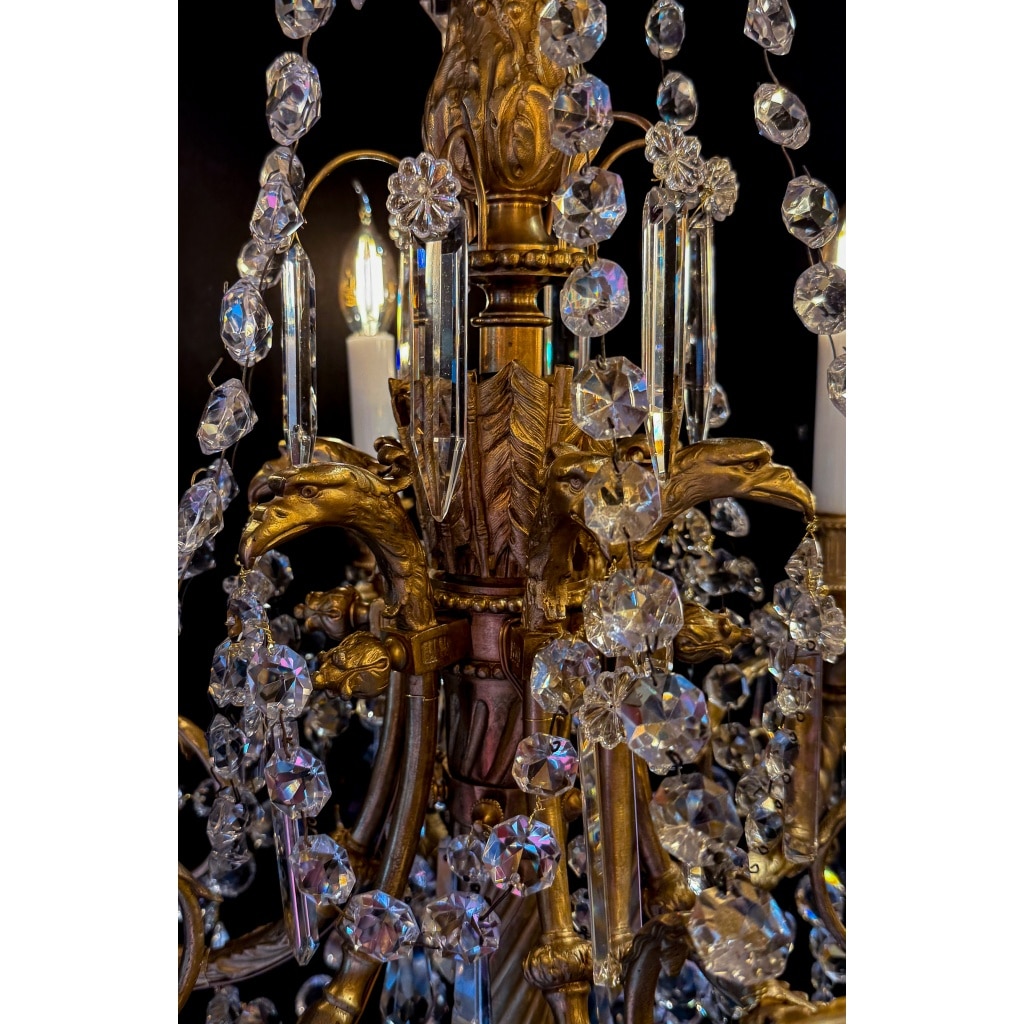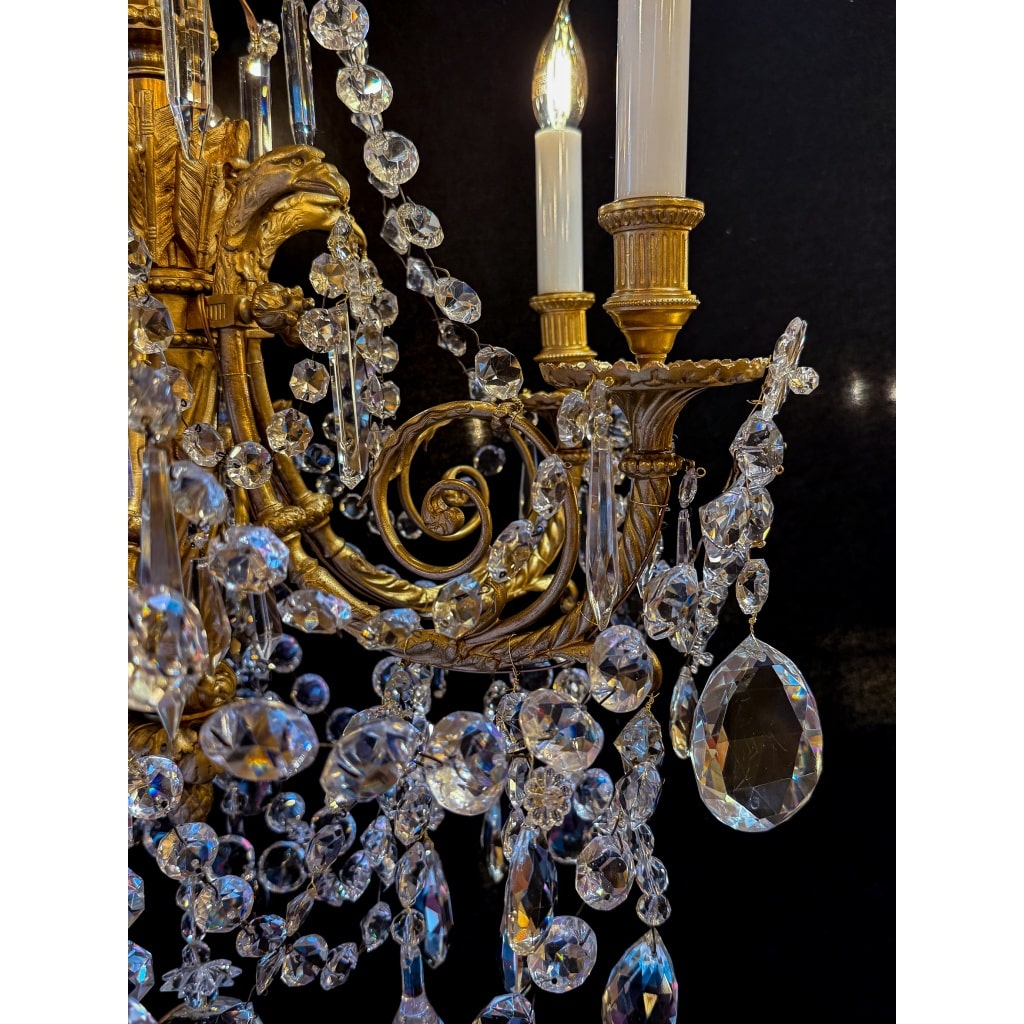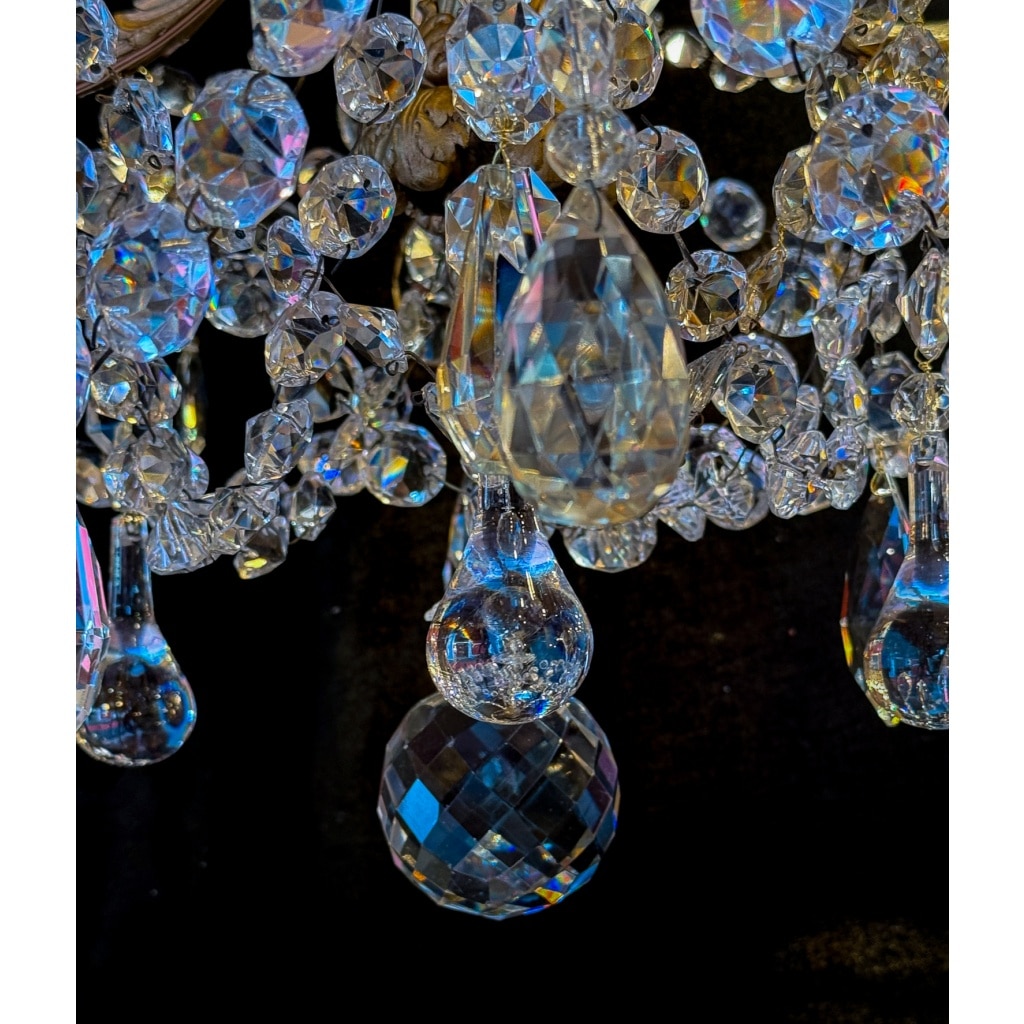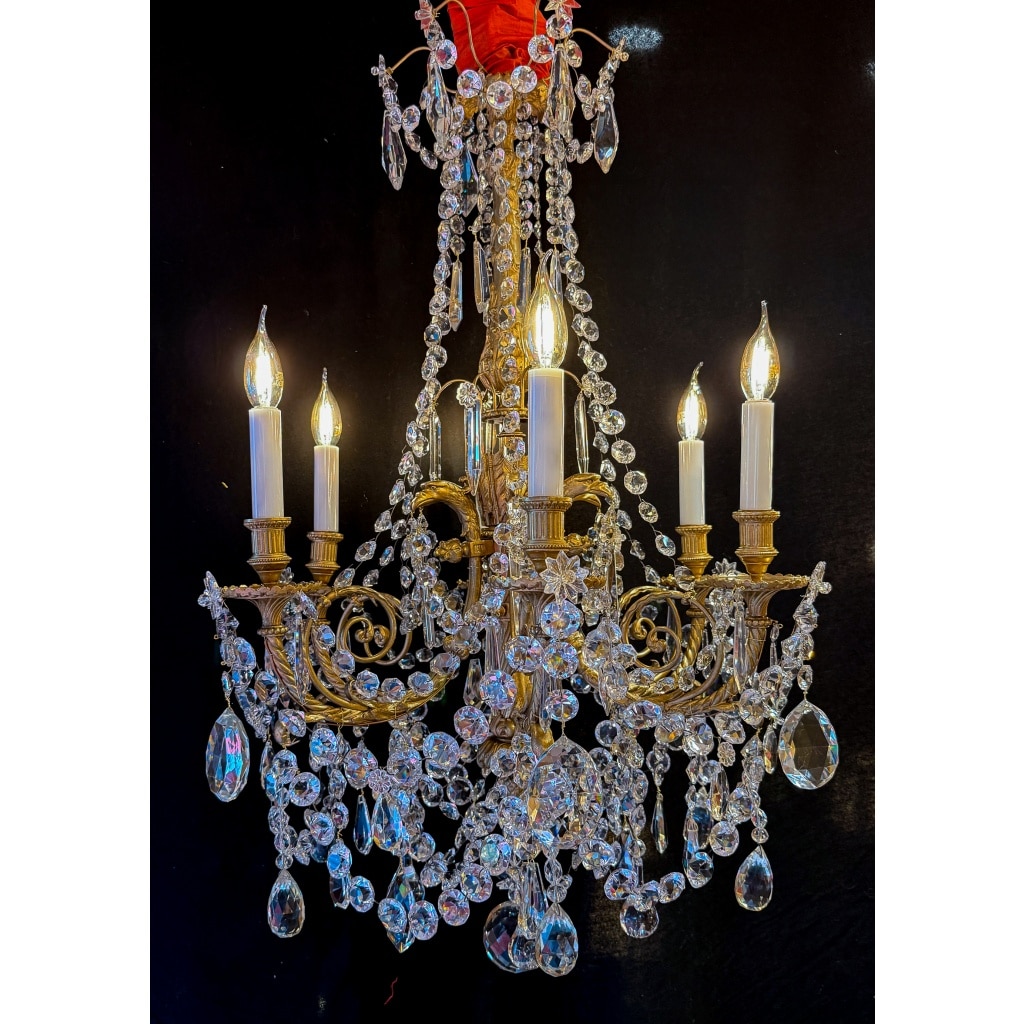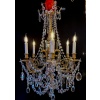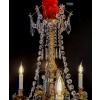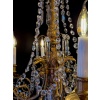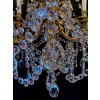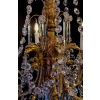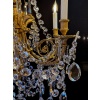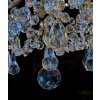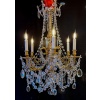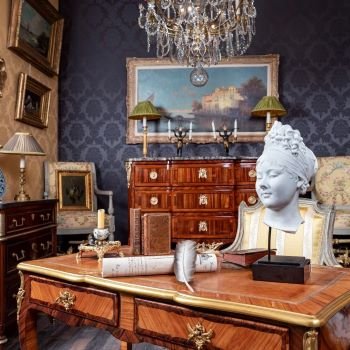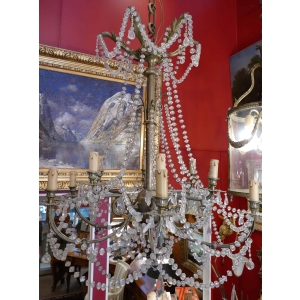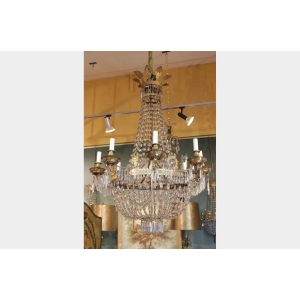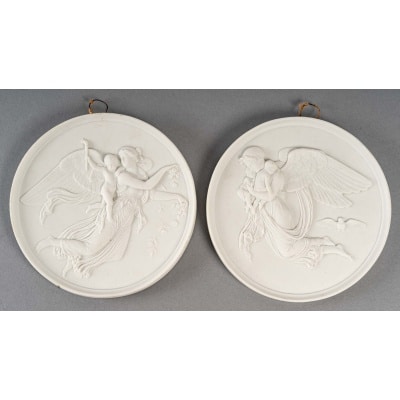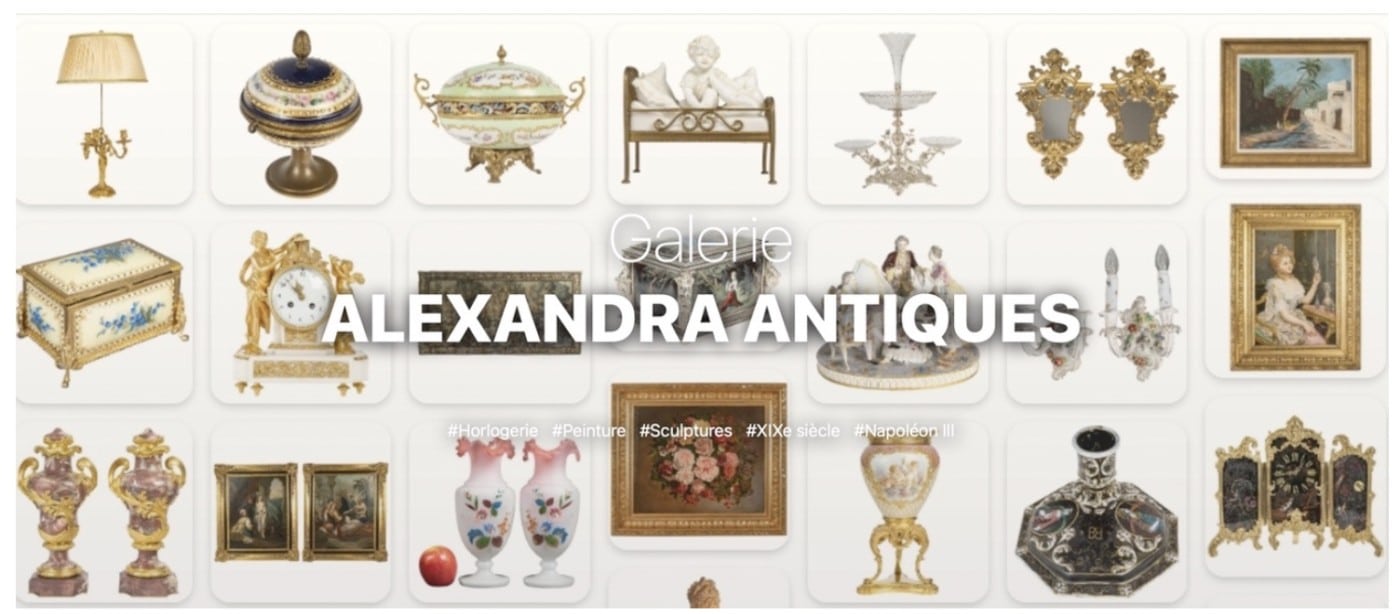Lustre à têtes d’Aigles dans le style Louis XVI en bronze ciselé et doré vers 1850-1870
Ce lustre décoratif dans le style Louis XVI à six bras de lumière, est réalisé en bronze finement ciselé dans sa belle dorure d’origine. La partie centrale est orné d’un carquois, d’un fût à rinceaux feuillagés surmonté de têtes d’aigle.
Le lustre est agrémenté d’un beau et élégant décor de cristal taillé, dont des descentes d’octogones et de nombreux cristaux facettés. Il se termine par une boule peine en cristal facettés.
La qualité du cristal, nous permet une attribution aux productions des Cristalleries de Baccarat.
Exemple remarquable du travail français de style Louis XVI et d’époque Napoléon III, vers 1850-1870.
Dimensions :
Hauteur : 100 cm.
Diamètre : 68 cm.
En excellent état de conservation, ce lustre a été soigneusement nettoyé et conserve sa belle dorure d’origine. Il est électrifié selon les normes européennes, avec la possibilité d’une adaptation aux standards américains sur demande.
Baccarat :
En 1764, le roi Louis XV accorde à Louis-Joseph de Montmorency-Laval, évêque de Metz, l’autorisation d’établir une verrerie dans le village de Baccarat en Lorraine.
En 1824, Ismaël Robinet, ouvrier verrier de Baccarat, invente une pompe à air pistonné qui facilite le soufflage du verre. L’année suivante, Baccarat développe la technique du pressé-moulé.
En 1855, Baccarat participe à la première Exposition universelle parisienne, avec notamment deux candélabres et un lustre de dimensions monumentales.
En 1860, le 29 octobre, Baccarat dépose sa marque de fabrique au tribunal de commerce de Paris : une carafe, un verre à pied et un gobelet inscrit dans un cercle. D’abord imprimée sur une étiquette en papier, l’estampille sera ensuite directement gravée sur la pièce.
Baccarat est un cristal d’une excellente qualité, il ne contient pas moins de 31,7% de plomb, sans aucun default, un haut niveau d’exigence, voici ce qui caractérise la manufacture. La Cristallerie de Baccarat traverse les générations tout en restant un symbole de l’art de vivre à la Française.
—
Louis XVI Style Eagle-Head Chandelier in Chiseled and Gilded Bronze circa 1850-1870
This decorative Louis XVI style six-arm chandelier is crafted from finely chiseled bronze in its beautiful original gilding. The central part is adorned with a quiver and a shaft with leafy scrollwork topped with eagle heads.
The chandelier is embellished with a beautiful and elegant cut crystal decoration, featuring octagonal drops and numerous faceted crystals. It culminates in a faceted crystal pinecone ball.
The quality of the crystal suggests an attribution to the productions of the Baccarat Crystal Works.
A remarkable example of French craftsmanship in the Louis XVI style from the Napoleon III era, circa 1850-1870.
Dimensions:
Height: 39.37 inches.
Diameter: 26.77 inches.
In excellent condition, this chandelier has been carefully cleaned and retains its beautiful original gilding. It is electrified according to European standards, with the possibility of adaptation to American standards upon request.
About Baccarat:
In 1764, King Louis XV granted Louis-Joseph de Montmorency-Laval, Bishop of Metz, permission to establish a glassworks in the village of Baccarat in Lorraine.
In 1824, Ismaël Robinet, a glassworker at Baccarat, invented a piston air pump that facilitated glassblowing. The following year, Baccarat developed the pressed-molded technique.
In 1855, Baccarat participated in the first Parisian World’s Fair, showcasing two candelabras and a chandelier of monumental dimensions.
On October 29, 1860, Baccarat registered its trademark with the Paris Commercial Court: a decanter, a goblet, and a glass inscribed in a circle. Initially printed on a paper label, the stamp was later directly engraved on the piece.
Baccarat crystal is of excellent quality, containing no less than 31.7% lead, without any defects, reflecting a high level of craftsmanship. This is what characterizes the manufacturer. The Baccarat Crystal Works has traversed generations while remaining a symbol of the French art of living.
| Siècle | 19ème Siècle |
|---|---|
| Style | Louis XVI |
| Type d'Objet | Antiquités |

